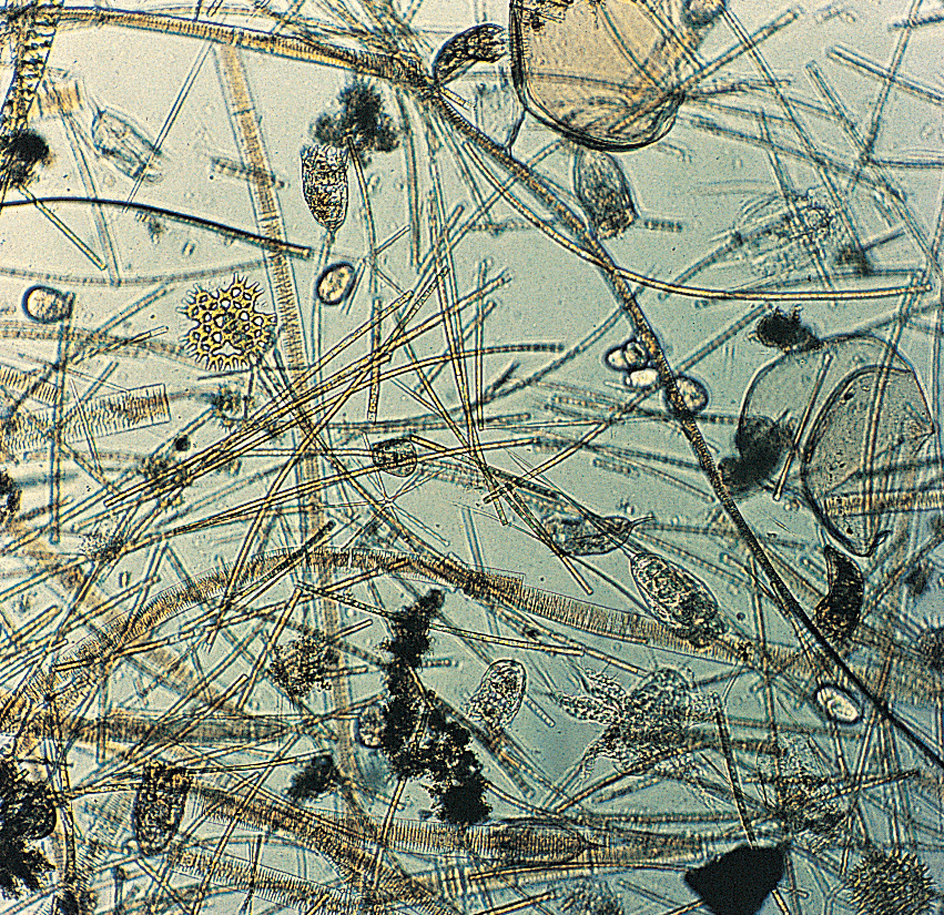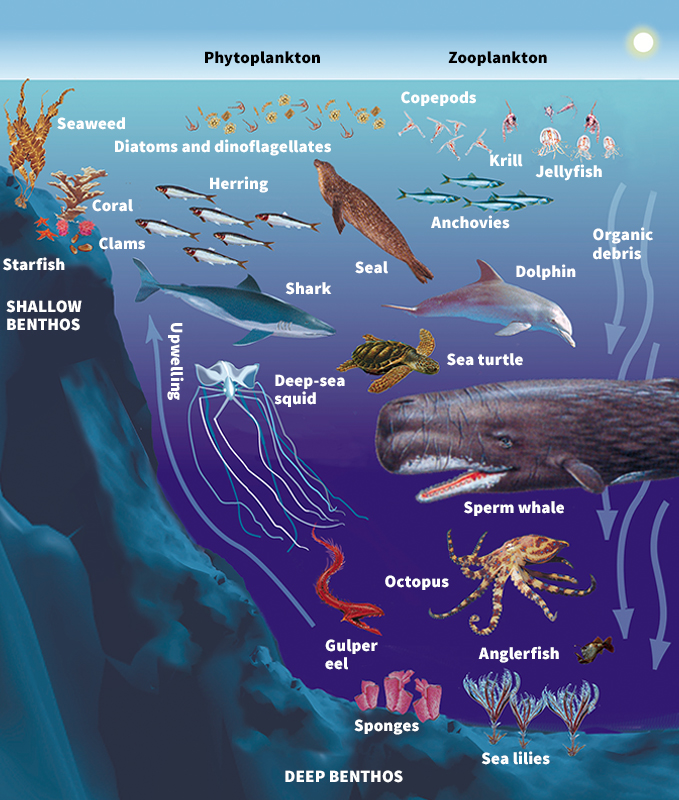Plankton is the mass of tiny organisms that drifts at or near the surface of oceans, lakes, and other bodies of water. The word plankton comes from a Greek word that means wandering. Some planktonic organisms can swim, but they cannot swim strongly enough to avoid being carried about by water currents.

A wide variety of organisms make up plankton. The smallest organisms cannot be seen without a microscope. The largest, certain types of jellyfish, can grow 7 feet (2.1 meters) wide. Scientists often divide plankton into types based on the organisms they contain. Two simple categories are phytoplankton and zooplankton. Phytoplankton consists chiefly of simple, one-celled algae. Zooplankton includes microscopic protozoans and such sea animals as copepods, water fleas, and jellyfish.
Some organisms spend their entire lives as plankton. They are called holoplankton. Other organisms, called meroplankton, spend only part of life as plankton. The most common meroplanktonic organisms are the eggs and larvae (immature forms) of animals that live on the floors of shallow oceans. These organisms drift freely as plankton until they develop into adults and settle to the bottom. Other meroplanktonic organisms include the eggs and larvae of larger, freely swimming animals, such as fish and squid.
Plankton plays a major role in food webs, the feeding relationships between organisms. Phytoplankton forms the base of these food webs. Phytoplankton can grow using only sunlight and the minerals in water in a process called photosynthesis. Certain zooplankton eat phytoplankton. These zooplankton are eaten by larger zooplankton and by fish and other water animals. Food produced by plankton also may sink and be consumed by bottom-dwelling organisms.

